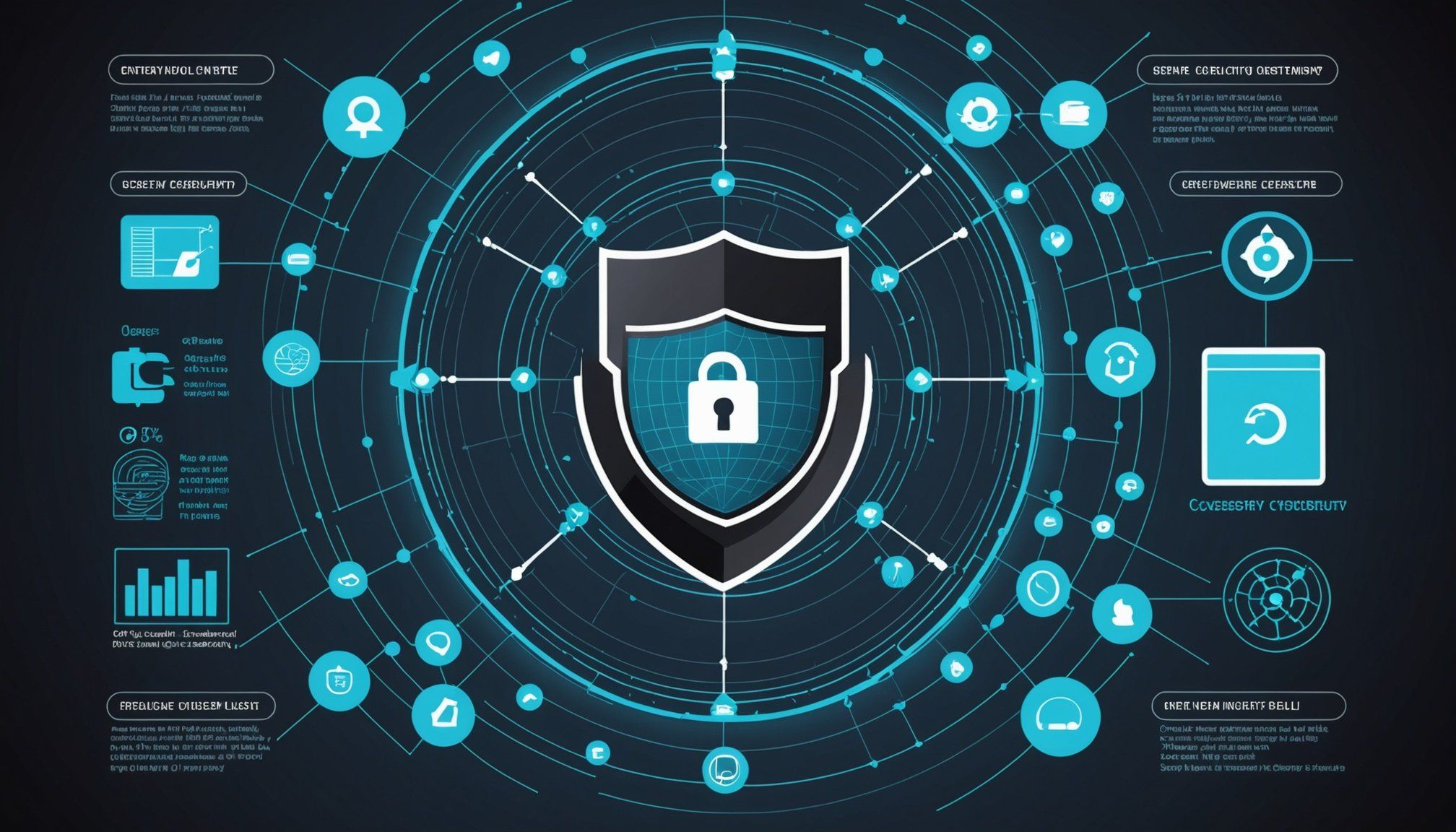Overview of Cybersecurity in the UK Healthcare Sector
With the rapid advancement of technology, cybersecurity in healthcare has become a pivotal aspect of protecting sensitive patient data. In the UK, the current cybersecurity landscape poses significant challenges due to increasing sophistication in cyber threats. Threat actors are constantly finding novel methods to breach systems and gain unauthorised access to patient information. These threats can lead to severe repercussions, including financial loss and damage to reputation.
Patient data is a lucrative target, making the importance of cybersecurity even more pronounced in safeguarding personal and medical records. UK regulations have been put in place to combat these issues, ensuring that healthcare organisations meet strict cybersecurity standards. The UK’s regulatory framework includes guidelines such as the General Data Protection Regulation (GDPR), which mandates the protection and privacy of all individuals’ data within the European Union.
In the same genre : Unlocking Quantum Potential: Innovative Strategies for UK Tech Firms to Gain Competitive Edge
Healthcare providers must remain vigilant by regularly updating their security protocols and systems to keep up with the evolving threat landscape. By understanding and adhering to UK regulations and adopting a proactive approach to cybersecurity, healthcare organisations can better protect themselves against potential breaches, thus maintaining trust with patients and stakeholders.
Risk Assessment Framework
The risk management process is crucial for identifying and addressing potential threats and vulnerabilities within the UK healthcare sector. An effective risk assessment begins with understanding the key components: recognizing potential threats, assessing vulnerabilities, and evaluating the impact of these risks on operations and patient data security. Employing a systematic approach to threat identification helps in pinpointing areas of weakness that could be exploited by cyber threats.
Also read : Unlock instant subtitles with ai for your videos
Vulnerability assessment methodologies are vital for determining the susceptibility of healthcare systems to cyber attacks. These methodologies assist organisations in identifying system flaws that could be exploited by malicious actors. By conducting regular assessments, healthcare providers ensure that their cybersecurity measures remain robust against evolving threats.
Continuous risk monitoring utilises advanced tools and techniques to keep potential threats in check. This proactive measure is essential for maintaining system integrity and preventing unauthorized access to sensitive data. By incorporating automated monitoring solutions and real-time analytics, healthcare entities can promptly detect and respond to any security breaches.
In summary, a comprehensive risk assessment framework not only mitigates potential threats but also fortifies the healthcare sector against the ever-evolving cybersecurity landscape.
Access Controls and User Authentication
In the realm of cybersecurity in healthcare, access management forms a critical line of defence. Establishing robust access controls ensures only authorised personnel can access sensitive data, significantly reducing the likelihood of data breaches. One essential component of strong access controls is user authentication. Using methods like multi-factor authentication (MFA), healthcare organisations reinforce their security by requiring multiple forms of verification before granting access to systems.
Multi-factor authentication enhances security by making it much more difficult for unauthorised users to bypass protection mechanisms. This typically involves something the user knows, such as a password, and something the user has, like a mobile device, to receive authentication codes.
Best practices in managing user privileges include implementing the principle of least privilege. This principle advocates that users should only have the necessary access levels to perform their jobs.
Continuous review and adjustment of user permissions help maintain the integrity and confidentiality of patient data. By periodically auditing access logs and revoking unnecessary privileges, organisations can fortify their data protection measures, thus safeguarding the edifice of trust and security within the UK healthcare sector.
Compliance with UK Laws and Regulations
Compliance with UK data protection law is a crucial aspect of cybersecurity in healthcare. It ensures that healthcare organizations protect patient data effectively, adhering to legal standards. The GDPR is a cornerstone of UK regulations. It emphasizes the need to safeguard personal data and uphold privacy rights, impacting how healthcare data is managed and stored.
Non-compliance with these regulations can result in severe consequences, such as hefty fines and reputational damage. It is imperative for healthcare facilities to implement strategies that ensure ongoing regulatory compliance. This includes regular audits, updating data protection policies, and ensuring staff are well-informed about compliance requirements.
In the ever-changing regulatory environment, staying updated is key. To maintain compliance, healthcare organizations can adopt several strategies:
- Routine training sessions for staff to be abreast of the latest regulations and best practices.
- Developing comprehensive data protection policies that align with both UK laws and GDPR.
- Leveraging technology solutions to automate compliance checks and notifications to ensure the organization remains within legal boundaries.
By focusing on compliance, healthcare providers can not only avoid penalties but also enhance trust with their patients and stakeholders.
Employee Training and Awareness Programs
Employee awareness stands as a crucial pillar in safeguarding healthcare systems from cyber threats. Regular cybersecurity training is vital for minimizing human error, which remains a prevalent risk vector. It equips staff with the necessary skills to recognise potential threats, such as phishing schemes, which are a common tactic used by cybercriminals.
A practical approach to reinforcing this training is through phishing simulations. These simulations mimic real-world attacks to test employee response and readiness. By simulating these threats, organisations can evaluate how employees react and identify areas for improvement.
Metrics are essential for assessing the effectiveness of training programs. By analysing employee response times and the rate of successful threat identification during simulations, organisations can gauge the training efficacy. Additionally, monitoring the reduction in security incidents attributable to human error can serve as a valuable indicator.
Implementing ongoing employee training not only strengthens the organisation’s overall security posture but also fosters a culture of vigilance and responsibility towards data protection. As cyber threats continue to evolve, equipping the workforce with current knowledge and skills ensures a resilient defence strategy, ultimately contributing to the safe and secure operations of the healthcare sector.
Incident Response Plans and Protocols
In the realm of cybersecurity, having a robust incident response plan is crucial for managing and mitigating the impact of security breaches in the healthcare sector. Key components of such a plan include clear protocol development, predefined roles, and responsibilities. This ensures swift action and limits damage during a crisis.
Steps in developing comprehensive incident response protocols begin with identifying and prioritising potential threats. Once these are defined, crafting specific responses tailored to each type of threat is essential. Regularly testing these protocols through simulations is imperative to ensure they are effective and all personnel fully understand their roles.
A well-structured disaster recovery strategy within the incident response framework plays a vital role. This aspect focuses on restoring systems and data post-incident to minimise downtime and operational disruption. Critical to the success of any incident response plan is effective communication. Open channels must be established to convey information rapidly and accurately across the organisation and to external stakeholders as necessary.
Lastly, continuous improvement is key. Post-incident reviews should be conducted to analyse response efficacy, driving iterative enhancements, and fostering a culture of preparedness. In this dynamic threat landscape, staying agile and adaptable is paramount for the protection of sensitive healthcare data.
Case Studies and Real-World Examples
Understanding cybersecurity incidents within the UK healthcare sector provides vital insights into developing more effective defences. Analysing notable cybersecurity incidents offers lessons on mitigating future risks. For example, a 2017 ransomware attack on the NHS highlighted vulnerabilities in outdated systems. This incident prompted significant improvements, such as system updates and stricter access controls.
Beyond technical upgrades, these cases underscore the need for comprehensive best practices, including regular employee training and robust encryption measures. Real-world examples reveal that many breaches result from insufficient employee awareness and ineffective incident response strategies. Thus, revisiting and refining these processes is crucial for safeguarding patient data.
In addition, case studies serve as educational tools, informing healthcare organisations about potential threats and the importance of proactive measures. Best practice recommendations derived from these analyses frequently stress the necessity of ongoing vulnerability assessments and prompt patch management. By integrating these strategies, healthcare institutions can substantially reduce their risk of exposure to cybersecurity threats.
Ultimately, leveraging case studies equips healthcare leaders with actionable insights, fostering a more resilient cybersecurity posture. This approach not only protects sensitive information but also reinforces stakeholder trust in healthcare services.
Tools and Resources for Implementation
Implementing effective cybersecurity tools is essential for fortifying healthcare IT systems. These tools range from antivirus software and firewalls to advanced intrusion detection systems. Each plays a specific role in safeguarding data by identifying and neutralising threats before they escalate into significant breaches.
Healthcare organisations can leverage various resources to enhance their cybersecurity posture. This includes comprehensive staff training programs and workshops focusing on the latest threats and prevention tactics. Such resources ensure employees are well-informed and equipped to handle potential cyber risks.
Developing a robust implementation strategy involves a multi-pronged approach. Key components include regular system audits and updates, ensuring all software is current and patched against known vulnerabilities. Additionally, employing automation tools for routine security checks can alleviate the burden on human resources and provide consistent protection.
For successful implementation, healthcare entities should consider creating dedicated teams responsible for overseeing these strategies. This maintains a continuous focus on security, ensuring that policies adapt to emerging threats. Engaging with cybersecurity professionals for consultation and risk assessment can also provide valuable insights, further strengthening the organisation’s defensive capabilities against cyber threats. It’s about fostering a secure environment that prioritises patient data safety above all.











